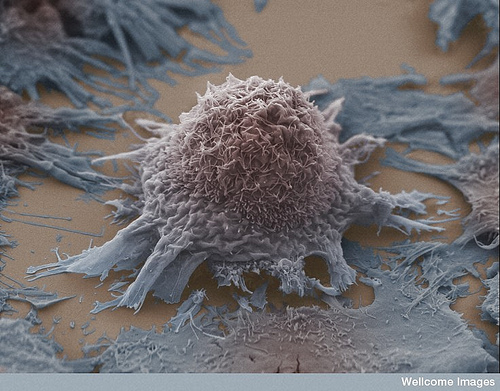By Melissa Spady (Contributor) – Email
Print Edition: April 3, 2013
Can alternative therapies help fight cancer?
It’s a big question – and one that Dr. Linda Balneaves endeavored to answer on campus last week.
Every year UFV holds a nursing lecture to provide continuing education opportunities for students hoping to work in the health-care system, as well as faculty and UFV alumni.
At this year’s lecture, UFV welcomed back Balneaves, a BC nurse researcher, associate professor at UBC, and principal investigator of Complementary Medicine Education and Outcomes (CAMEO).
Brad Whittaker, UFV’s director of research, introduced both the doctor and the program.
“CAMEO is a unique, nurse-led, research intensive collaboration between the University of British Columbia and the BC Cancer Agency,” Whittaker said. “She has a special interest in how individuals and families touched by cancer can be best supported in making safe and informed treatment decisions about complementary and alternative medicines.”
This is an area that Balneaves has studied for the past 16 years.
CAMEO focuses on researching alternative or complementary medicine practices and passing that knowledge on to both doctors and patients. Any health care system, practice or product that is not presently considered to be conventional medicine is termed complementary or alternative. This includes acupuncture, meditation, herbal remedies, hatha yoga and many others.
The inspiration for creating the program arose when Balneaves was still a nursing student.
“I had patients continually coming up to me and saying, ‘Hey, do you know anything about essiac [herbal tea], vitamin C, [or] some herbal remedy in the treatment of my cancer?’ and I could not answer those questions,” she said. “I had not been taught about it. I didn’t even have any knowledge about these therapies and what their role could be in cancer care.”
Studies show that up to 80 per cent of people living with cancer use a form of complementary medicine at some point after their diagnosis. After surveying patients at the BC Cancer Agency it was found that complementary and alternative medicines were the top therapy patients lacked information about. The truth of the matter is that there is very little reliable information available about alternative medicines.
“If you go onto Google and type in ‘complementary medicine’ and ‘cancer’ you’ll get 13 million or so hits,” Balneaves explained. “Most of those are either selling something or they’re based on anecdotal stories.”
Some patients continue to use other therapies while undergoing chemotherapy or radiation without informing their doctors, either because the patient feels it is either not important or that their doctor will not approve.
In a survey of health care professionals, many were under the impression that their patients were not using other medicines, whereas 75 per cent of the patient surveys showed they were. Although some therapies might not conflict with one another, there are many that do and could cause serious side effects.
Balneaves’ hope is that there will one day be open communication between patients and doctors without the fear of judgement – and this is a task that she and CAMEO are both working towards, little by little.
The long-term goal of the CAMEO program is to bridge the gaps between patients, health care professionals and complementary and alternative medicine practitioners.
“I’m very committed to doing research that isn’t stuck in the ivory tower of the university,” she concluded, “but is brought right to the bedside.”


